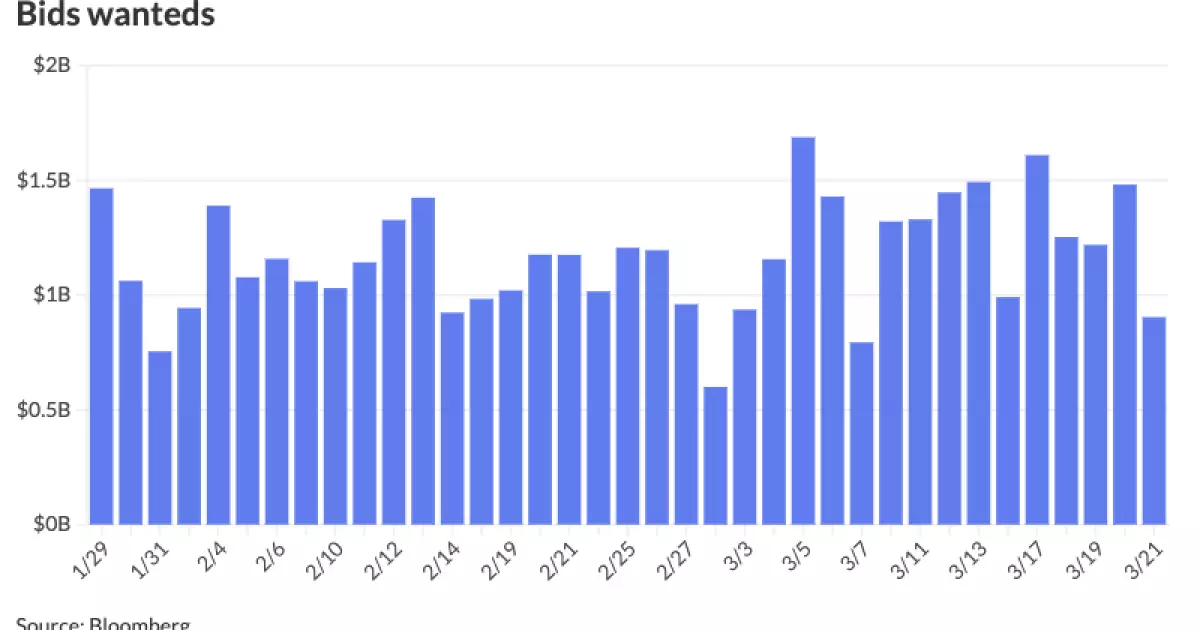In the current investment climate, the allure of municipal bonds seems to be waning. Rising Treasury yields have sent tremors through the municipal bond market, causing some investors to question the viability of what was once considered a stable investment. Many may argue that the relative stability of munis is being compromised by external pressures, including robust new issuance and the consistent volatility in U.S. Treasuries. As an investor, it is crucial to critically assess whether municipal bonds are still a safe harbor or if they represent a declining investment asset.
Declining Ratios: A Closer Look
The recent data reveals troubling trends for the municipal bond market. The two-year municipal to U.S. Treasury (UST) ratio fell to 66%, with the longer maturities showing similarly concerning statistics. These declining ratios signify a growing disconnect between munis and Treasuries. Investors may find themselves swayed by the comparative lure of other assets, particularly as UST yields continue their upward trajectory. This is particularly alarming given the significance of these ratios in projecting the attractiveness and risk associated with municipal investments.
Impact of Robust New Issuance
The increased issuance of new bonds has only exacerbated the situation, contributing to the softening performance of the municipal market. It is ironic—municipals were once celebrated for their scarcity and safety in uncertain economic times. However, the influx of new issuance, coupled with rising yields, has diluted their appeal. The market’s ability to absorb these new bonds will be tested in the coming weeks, posing difficulties for investors seeking returns in a crowded marketplace.
Investor Trends: Outflows Amid Higher Yields
Investors have been pulling money from municipal mutual funds, with recent outflows reported at an alarming $216.4 million. This trend raises a question: if municipalities are seen as sound investments during economic uncertainty, why are investors flocking away? The answer could lie in the pressing nature of tax season—investors typically sell during this time to optimize their portfolios. However, this shouldn’t downplay the reality: investors are making cautious moves as they grapple with higher yields from alternatives.
Signs of Short-Lived Support
Despite some attempts to firm up the market, many strategists believe that these developments are likely to be short-lived. Investors should tread carefully; while the monthly report hints at a potential stabilization, the persistent rate volatility combined with an influx of upcoming bond issues suggests ongoing uncertainty. If investors are keen on maintaining reasonable returns, the outlook appears gloomy, and another wave of selling could be looming just around the corner.
The Appeals of Longer Maturities: An Interesting Phenomenon
On a somewhat positive note, the long-end of the muni curve has shown some resilience. Long-term maturities have started to seem appealing, as some portfolio managers argue that 30-year bonds are worth a closer look, especially given their recent after-tax spread tightening. However, this raises another concern. Is the appeal of longer maturities based on sound fundamentals, or is it simply a knee-jerk reaction to fluctuating yields and investor anxiety? While some promise seems to be emerging, it takes more than fleeting interest to solidify the case for munis as essential components of well-balanced portfolios.
The Allure of Alternative Investments
As municipal bonds flounder in the face of higher yield alternatives, investors are increasingly turning their backs on a once-stalwart asset class. This is particularly true as UST yields continue to rise, making Treasuries seemingly more attractive than the ever-fluctuating munis. With returns fluctuating weekly, an investment once seen as stable now feels precarious. It’s understandable for investors to consider moving towards assets that guarantee better returns, even if it involves more risk.
A void in Confidence
Given the multitude of factors affecting the municipal bond market, the void of investor confidence is palpable. After all, in today’s market, merely holding a bond doesn’t ensure safety; investors want growth. As municipal yields rise while equity markets surge, the question remains: are munis thus becoming obsolete in a rapidly changing financial world? The once unwavering faith in municipal bonds seems increasingly threatened, leaving investors puzzled and uncertain.
The municipal bond market currently reflects a cautionary tale for investors. The combination of rising yields, robust new issuances, and significant outflows underscores a shifting paradigm. While the allure of such bonds may have diminished, careful consideration will determine whether they can reclaim their once-esteemed status as a cornerstone of conservative investment strategies.


Leave a Reply